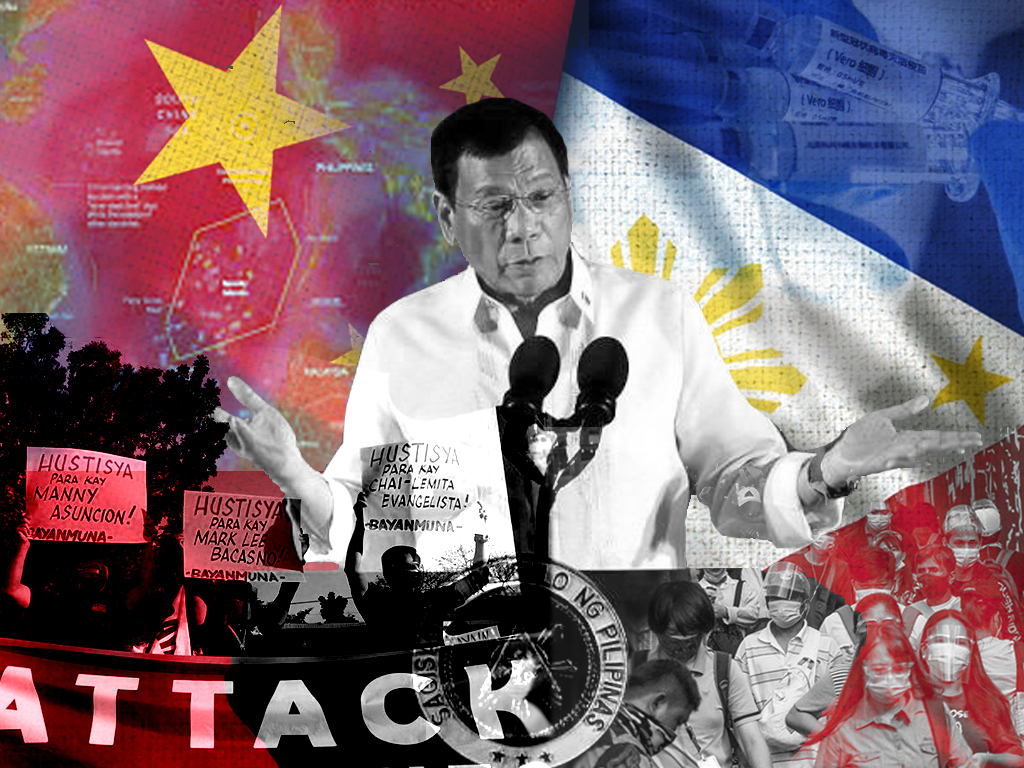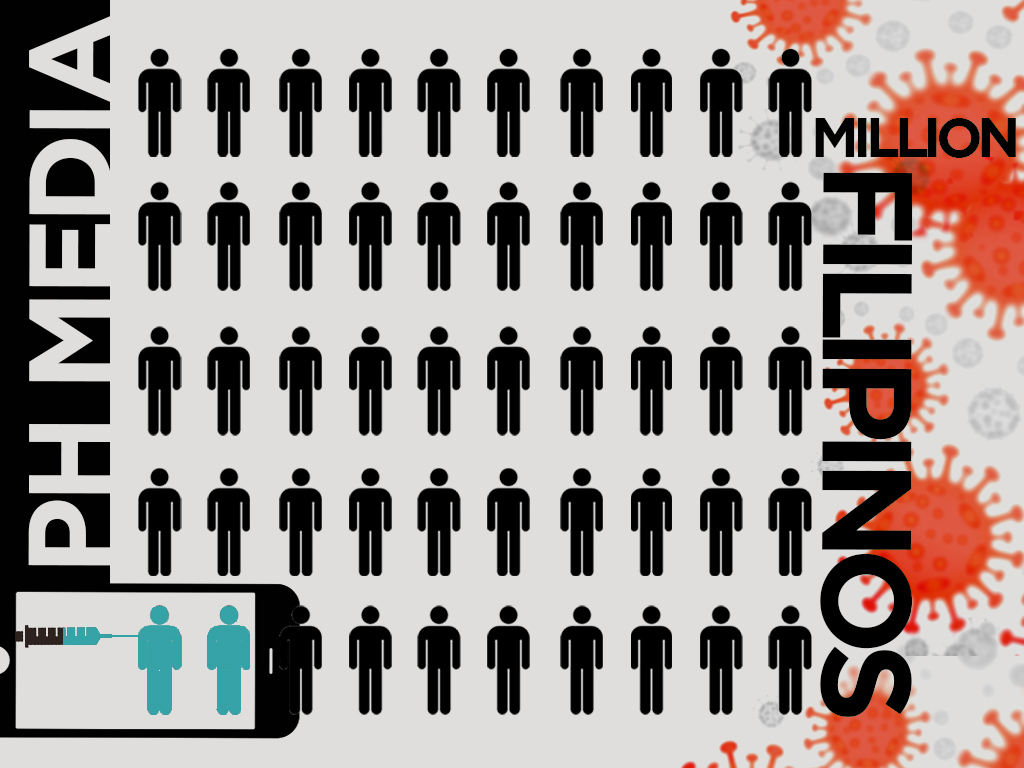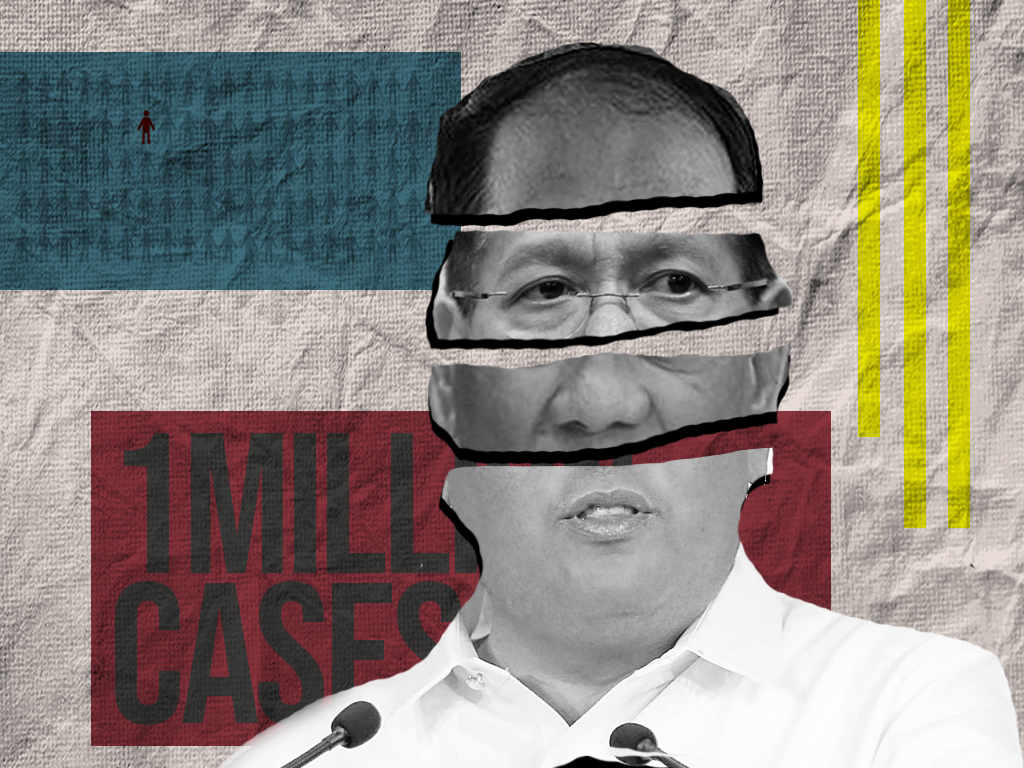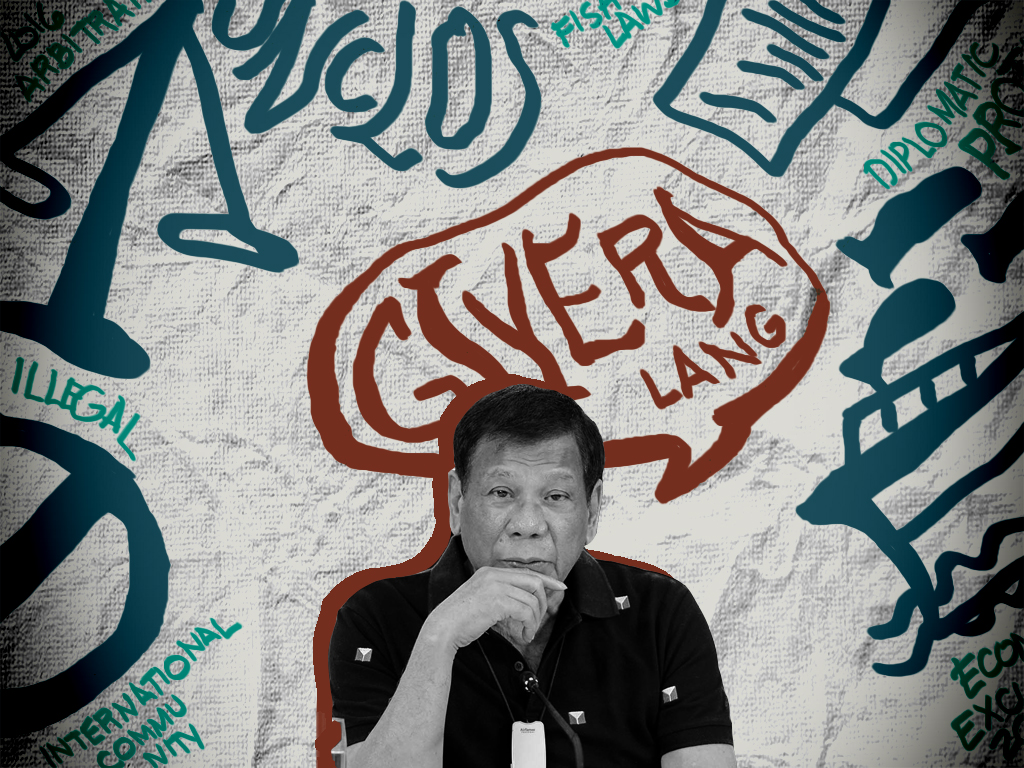Media Review
May 1 to 15, 2020
Every two weeks, CMFR will provide a quick recap of the media coverage of the biggest stories or issues, noting the same slips that our monitors have been doing. We intend this as a quick mapping of news, providing a guide for journalists and identifying gaps in reporting, the lack of interpretation and analysis as necessary. This section also hopes to engage more public attention and participation in current events, and for them to learn the practice of media monitoring. It is after all the public that serves as the best watchdog of press power.

A FRETFUL two weeks passed when the government could not provide answers on two urgent and crucial issues: China’s intransigence in the West Philippine Sea and the need to vaccinate Filipinos to fulfill a target that the IATF had set for itself: 70 million by the end of the 2021.
Instead of discussing what the Duterte administration planned to do to uphold Philippine sovereign rights in its maritime area, the administration wasted time, trying to make light of China’s current incursion. After the president backed off from his own challenge to debate former SC Justice Antonio Carpio, palace officials shifted to pointless talk about proxy debates rather than setting forth a policy discussion on the West Philippine Sea (WPS). Sadly, media picked up the bait and accommodated the distraction.
The media have so far failed to play a constructive role to raise the level of discourse on this issue. Coverage should be laying out the principles that support the Philippine claim to the territory. These sources are not limited to the sources that have so far spoken publicly on the subject. But media seem to have gotten stuck in the presentation of opposing views, the side of the government and those of his critics, reducing the matter to who can win a debate. It has followed the lead of Duterte, Roque and Panelo on the WPS, even if all three have been merely repeating one another. Media have also failed to surface any other sources who can speak with credibility and knowledge about options that will uphold the country’s claim.
Meanwhile, the vaccination program has not raised hackles either, except on social media where even some officials have expressed their befuddlement about what the government is trying to do. According to the DOH, newly-delivered AstraZeneca doses are expiring next month; even as so many are waiting to be called so they can receive free vaccine service.
These two areas of coverage demonstrate media’s problem when it holds on to the passive position of waiting for the news, fixated on what officials have to say; instead of investigating behind the scenes so they can provide more analysis and explanation for the obvious failings of government. So far, the press has been very careful to skirt around the real story. On the China question, it is clear the president has not figured out how to put his country and Filipinos above his loyalty to Xi Jinping. On the question of vaccines, the Duterte administration, through the IATF, is bungling the job again while it engages in spinning stories to cover up the failure.
Vaccine campaign
With a combined total of 7.7 million doses of AstraZeneca, Sinovac, Sputnik V and Pfizer arriving in the country, the government has expressed optimism that vaccination capacities would be boosted. Media busily reported the arrivals of these various brands, missing out on the news about the slow pace of vaccination.
CMFR criticized the media’s lack of interest in probing the vaccine rollout and the lapses or challenges, such as the low vaccination rate in BARMM reflected in vaccine trackers, the official decision to lower the target to 50 million and the adequacy of the system it has set up as more doses arrive.
In late April, TV Patrol reported allocated vaccine funds, but media did not keep up to check whether the government had actually secured the amounts of vaccines needed. Media have not questioned the assurances of the government that it could fulfill its declared objective of attaining herd immunity before the year ends, especially since the health secretary and the vaccine czar issued opposing statements on the matter.
Only Rappler laid out the irregularities and the lack of transparency about the inoculation of the president with Sinopharm, a vaccine that had yet to receive its EUA. Pia Ranada said, “Duterte’s vaccination may have been a wasted opportunity to drum up vaccine confidence in a country where (as much as) 6 in 10 people don’t want to get vaccinated.”
COVID cases
Government’s pandemic strategy has relied only on the lockdown to reduce COVID cases. But with more Filipinos needing to work to survive and confronted with the economic losses in strict implementation of various forms of quarantine, it is accurate to describe government’s action as dismal in its inadequacy.
So far, pandemic managers have not engaged in a widespread publication of COVID-19 data with the necessary analysis.
Inquirer.net crunched DOH numbers to show the critical state of hospital bed capacity in NCR, posting the latest data available as of May 12. But the exercise needs to be sustained and made more accessible in its presentation.
CMFR cheers news.ABS-CBN.com‘s effort to dissect data on May 13. Warren de Guzman and Edson Guido picked up on NEDA chief Karl Chua’s claim that there are signs that the economy could be reopened, amid news that it has contracted for the fifth consecutive quarter. De Guzman and Guido pointed out the danger of doing so. While recent data show a decline in daily confirmed cases since the recorded peak in April, these “have not fallen to acceptable levels, and are still much higher compared to 2020.” They further added that the DOH lacks the capacity to track COVID-19 variants, as evidenced by the latest batch sequenced by the Philippine Genome Center: a measly 46 samples out of thousands of cases reported.
There is little confidence in what the government is doing, so people will continue to hold back from normal economic activities until cases actually decline.
West Philippine Sea
With media generally limiting the discussion to Duterte’s statements and the follow-up of his spokesperson, CMFR cheered Philstar.com’s effort to popularize the West Philippine Sea issue and contradict Duterte’s claim that war is the only resolution to the tension.
There are more Filipinos whose insights and experience could add further to the discussion of this matter since the issues have been there even before Duterte administration. The point is to get it out of official control and involve more views and perspectives.
Human rights and red-tagging
Unfortunately, the issues of WPS and the pandemic have also sidelined the issue of human rights abuses, including the threats of red-tagging. The Inquirer’s Southern Luzon bureau reported that four activists were arrested for alleged illegal possession of firearms in Calabarzon, the same area of the “Bloody Sunday” attacks in March. But other media did not follow up on this lead.
As arrests were based on illegal possession of firearms, reports should have noted the long-established practice of evidence planting resorted to by law enforcement agents. Media reporting on these cases should go beyond what is written in documents prepared by the police. There should be reference to the pattern of such arrests, as well as cases where suspects charges have been later acquitted and set free.
Media should check against the tendency to simply follow the leads proffered by police, especially when human rights issues are involved.
Media resorted to formulaic reporting in highlighting the decision of the NTF-ELCAC to add six more spokespersons, as coverage relied only on the quoting what was said by opposition senators who questioned the task force’ use of propaganda.
Instead, media should do its own investigation, the scope of duties and responsibilities, the kind of campaigns supported by these expenses to determine whether these expenses serve public interest.
In highlighting the decision of the NTF-ELCAC to add six more spokespersons, media relied on views expressed by senators who questioned all these efforts as propaganda, instead of actually reporting the appointment as excessive publicity for the task force.




Leave a Reply